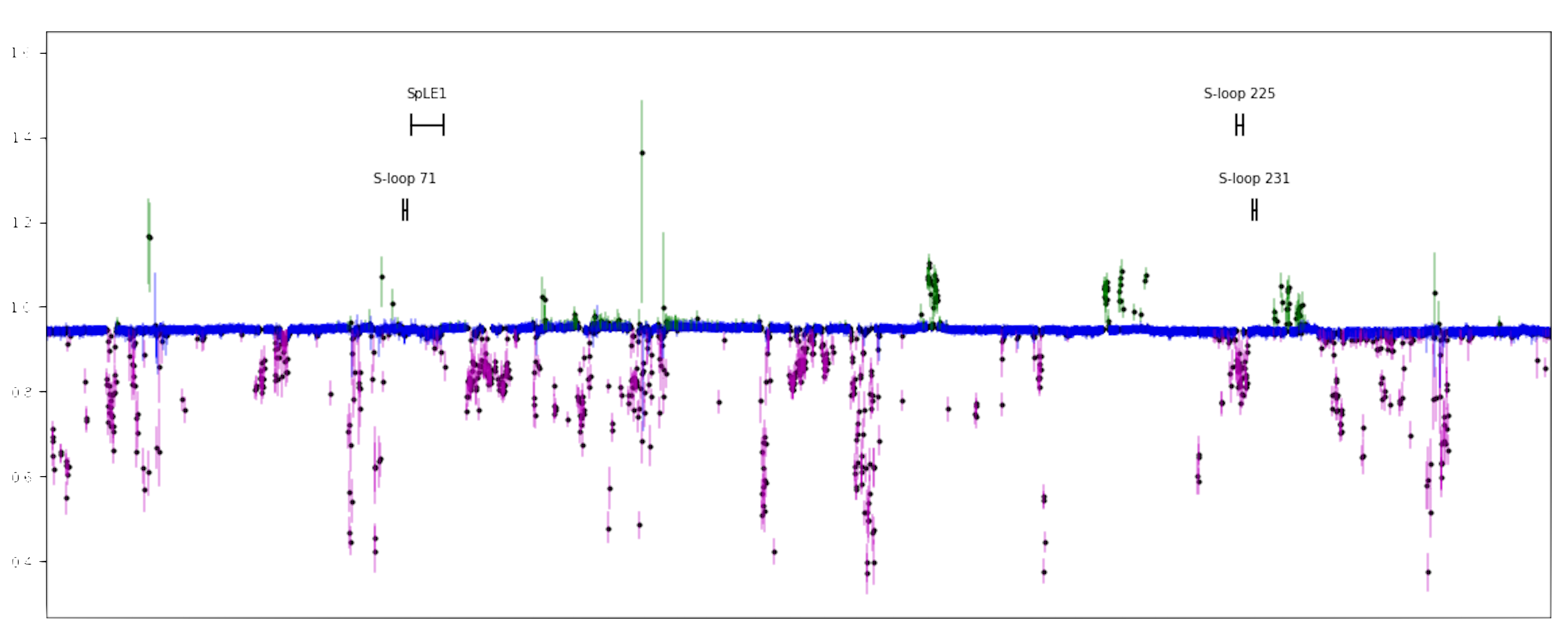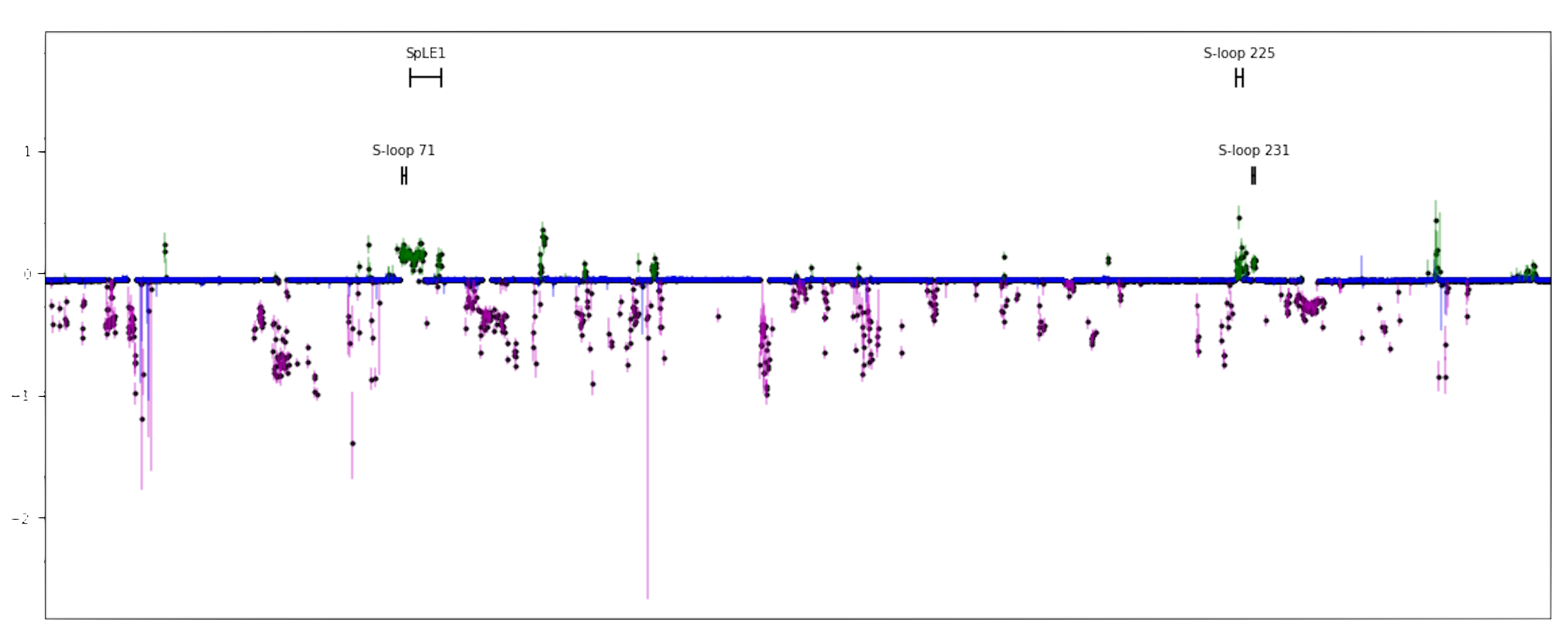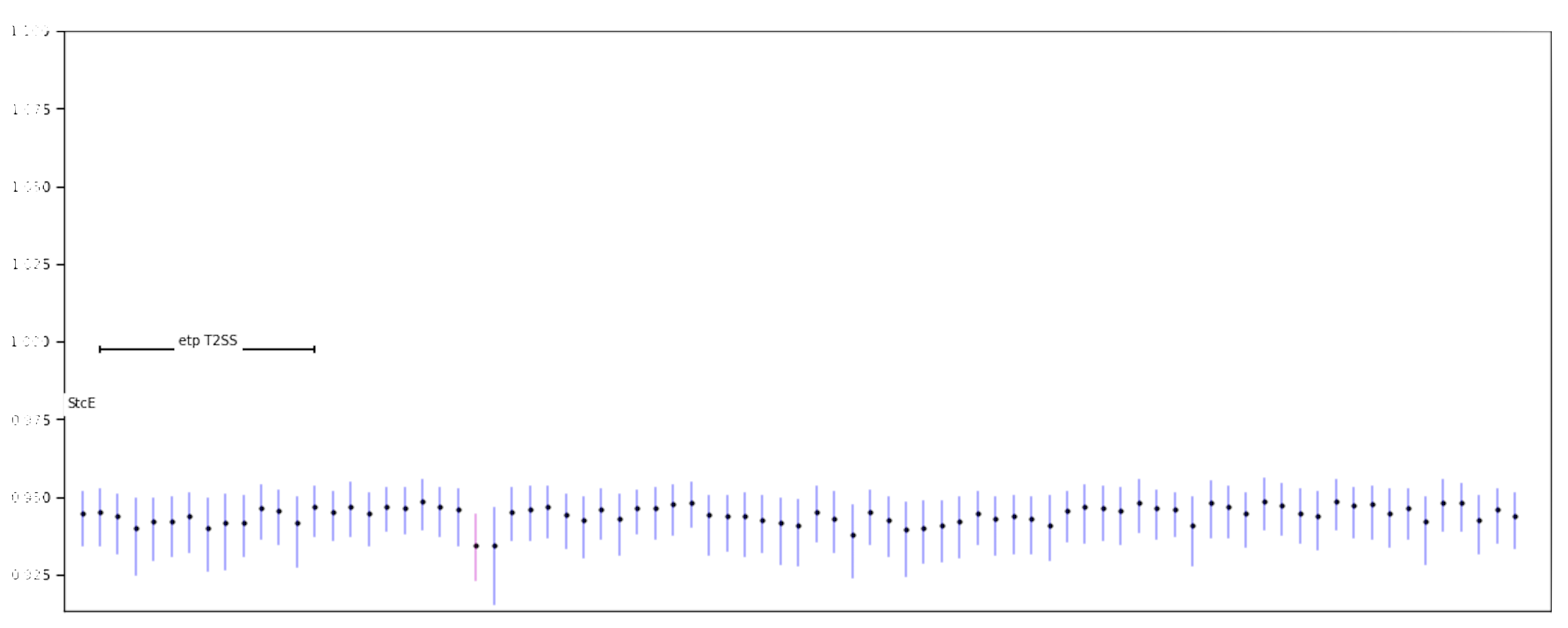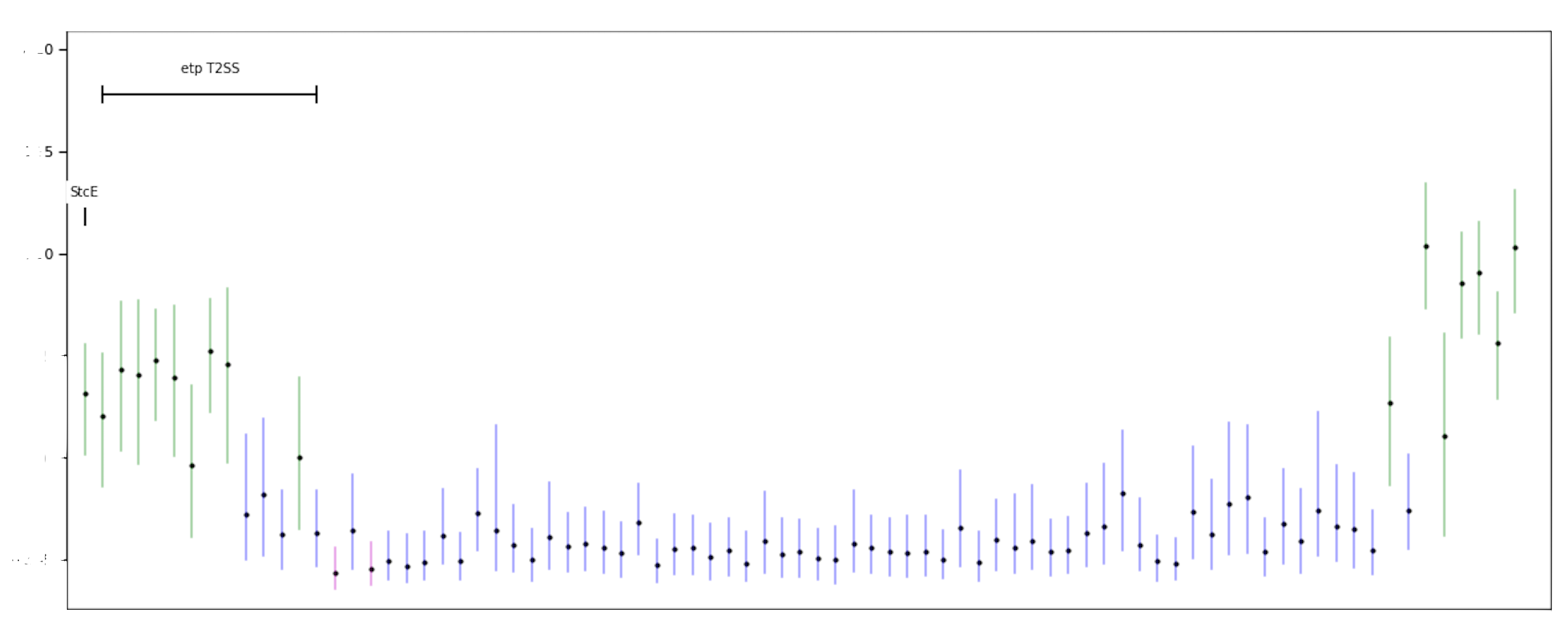4 Experimental results
As noted in Chapter 5, we aim to identify UPEC-specific genes that are overrepresented in the final mixtures that have been through mouse passage, but that are not overrepresented in the control passage through culture alone.
These results were obtained using a Bayesian statistical multilevel regression technique, and are presented graphically below. As the UPEC genome comprises a chromosome and an accompanying plasmid, these are shown separately.
Results are shown for both post-control, and post-mouse passage arms of the experiment.
The statistical methodology is beyond the scope of this workshop. But please do ask if you’re interested.
4.1 Interpreting the experimental results
We are interested in genes that are more abundant than expected after mouse passage, but not after control passage.
4.1.1 Chromosomal genes
Comparing Figure 4.1 and Figure 4.2 we can see that in both cases there are clusters of genes that appear to be overrepresented, and they are different for the control- and mouse-passaged arms of the experiment.
In the mouse-passaged isolates, four regions known as “S-loops” were seen to be enriched. These encode for urea degradation, effector proteins associated with adherence to bovine tissue, a surfactin, and hæm utilisation. The known functions of these genes are consistent with a role in adherence to tissue, and infection.
4.1.2 Plasmid-borne genes
A comparison of Figure 4.3 and Figure 4.4 shows that no plasmid-borne genes are overrepresented in the control arm, but that a run of several genes corresponding to an operon for a Type II Secretion System (T2SS) are highlighted in the mouse arm. This T2SS has been reported to play a role in adherence to mammalian host tissues, biofilm formation, and is considered an important virulence factor.
4.1.3 Identifying a candidate
The T2SS was chosen as a likely candidate for investigation, given its known roles in host tissue association and infection. The etpD gene is a secretin that is critical for constructing the type II secretion apparatus, and knocking out this gene in a UPEC mutant is expected to prevent construction of a working type II secretion system.
To investigate the role of the type II secretion system in adherence to the urinary tract and/or catheter material, it was decided to construct a knockout mutant lacking the etpD gene: \(\Delta\)etpD and to test experimentally its role in adherence.
You will be visualising and analysing the data from this experiment in the next section of the workshop.



